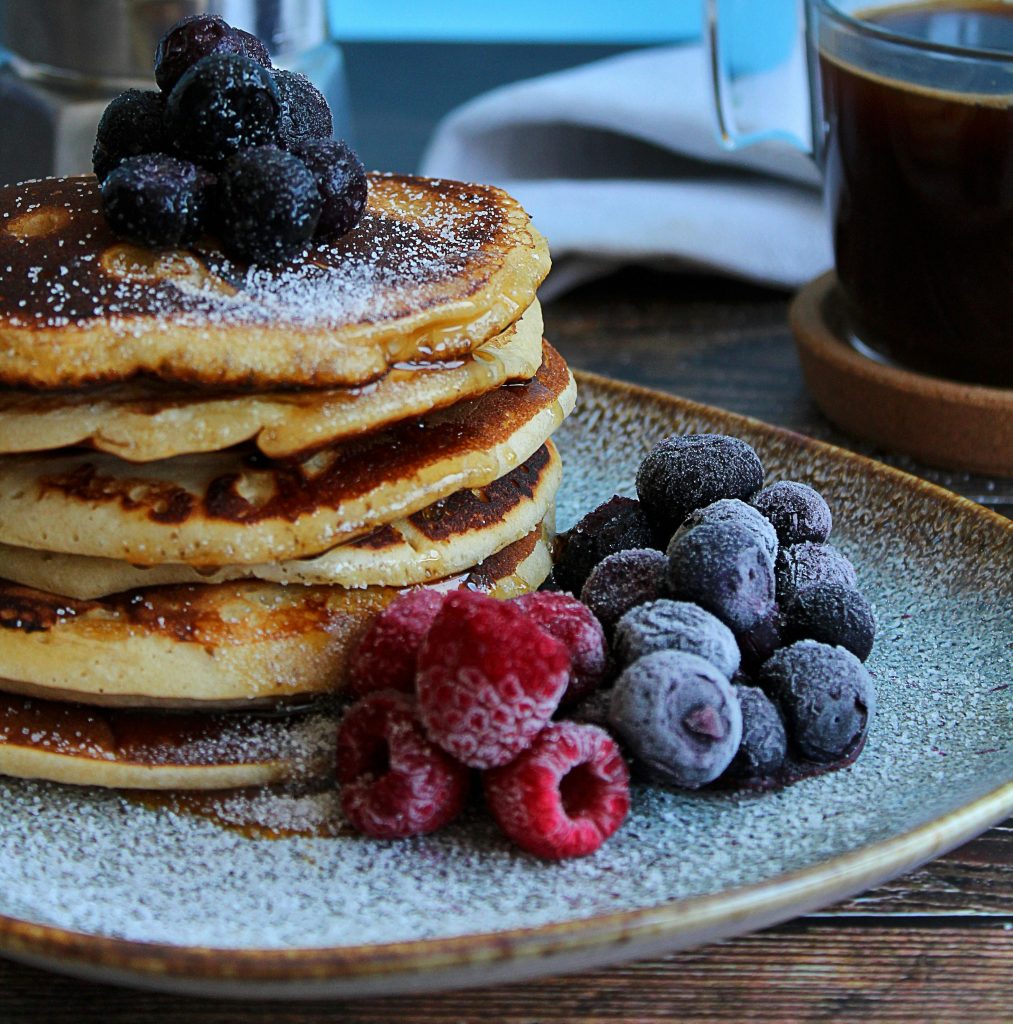Brunch is rather a big deal in Durham I have discovered as a naïve first year, and this led to a discussion earlier this week about which of the two rival pancakes are superior, Scotch or English. While there may be some zealots in the pancake debate advocating for one side or the other, the general conclusion is that they serve different purposes for different occasions. Not wishing to stoke the flames, I think this is just as good an excuse as any to write up my two recipes for both Scotch and English pancakes, along with some suggestions for what to have with it.
Scotch Pancakes (also known as Drop Scones)
Ingredients:
175g self-raising flour
1 tsp baking Powder
40g caster sugar
1 egg
200ml milk
Butter or oil for greasing
- Mix the flour, sugar, and baking powder together in a mixing bowl until well incorporated, and then make a well in the centre.
- Add the egg and half the milk and beat with a whisk until it forms a smooth, thick batter.
- Add some more of the milk a bit at a time until you have a slightly thinner consistency that can be poured. Note that you may not need all of the milk.
- Heat a non-stick frying pan on a medium to high level and grease it with either oil (of your choice) or butter.
- Use a dessert/pudding spoon to pour the batter into small, flat, and disk-shaped drops on the frying pan. When bubbles start to appear on the surface, use a fish slice or palette knife to flip them around.
My go-to toppings for these are maple syrup, a berry compote, and crème fraiche. However, honey, yoghurt, blueberries, and orange syrup are all interesting additions, or even a chocolate sauce and hazelnuts if you are in the mood for something heartier.
English Pancakes:
Ingredients:
100g plain flour
2 eggs
300ml milk
- Pancakes truly are straightforward in terms of their ingredients and assemblage, simply add the flour to a mixing bowl and pour 50ml of the milk and crack the two eggs into a well at the centre.
- Whisk until all of the flour is incorporated and you are left with a thick, but smooth, paste.
- Continue to whisk, all the while pouring a slow but steady stream of the remaining milk until you have a thin batter.
- Now while the making of the batter is easy enough, the fiddly bit is not allowing your batter to stick to the frying pan. Add plenty of butter or oil to grease a frying pan placed over a medium heat, and then ladle some of the batter into the pan once it is hot. Tilt the pan to make sure that the batter covers the whole of the surface in an even and thin layer.
- Leave the batter to cook for 30 seconds to a minute, or until you are able to get your fish slice underneath it, and then gently flip it over. Leave to cook for about 30 seconds on the opposite side, then serve immediately.
The classic topping, that arguably can’t be beaten, is lemon and sugar; however, I feel pressured to suggest alternatives for the sake of variety. Chestnut purée is a perfect choice for those looking for a morish but more healthy spread. One must also not rule out savoury pancakes, and while these could work for Scotch pancakes, I’ve always found they work better for the English version. My suggestion for a savoury pancake filling would be spinach and ricotta, however hummus and smocked peppers also work surprisingly well.


